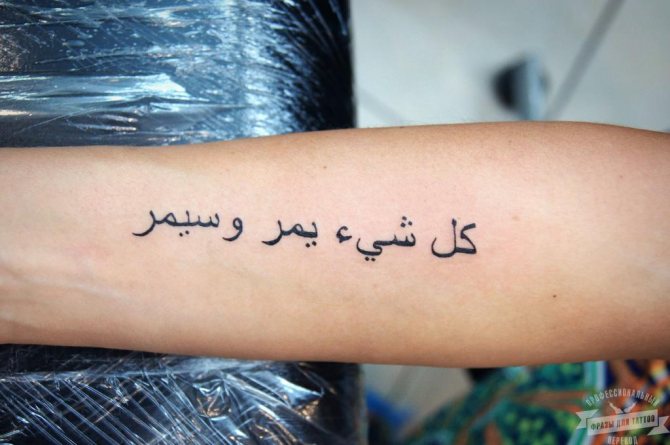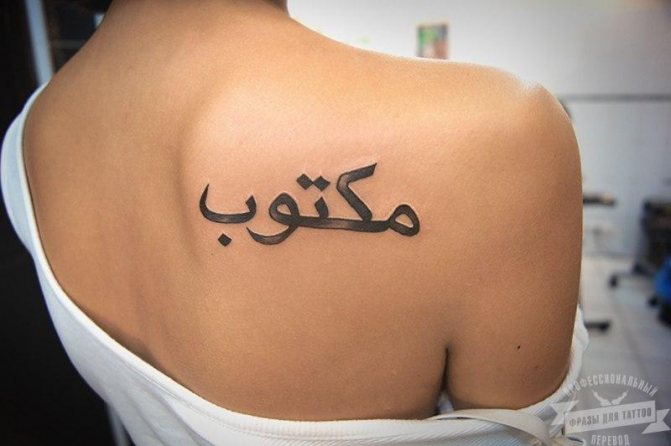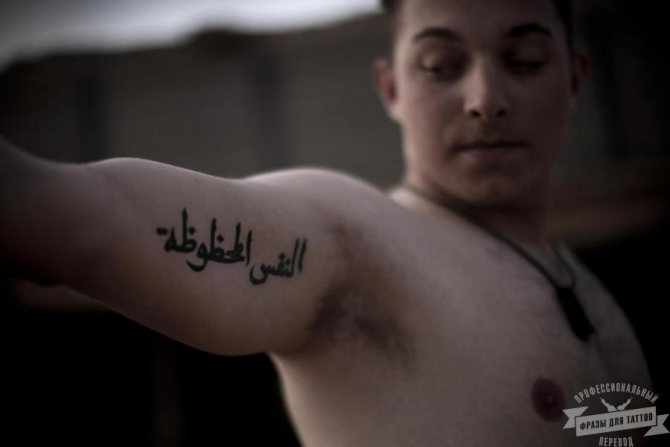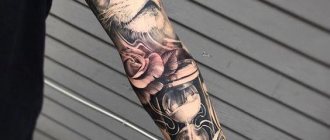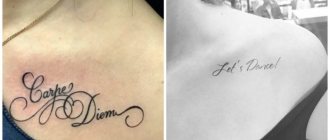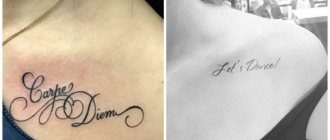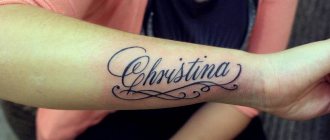What is a written text for Muslims? What is it like and what are the most famous formulas for script compositions?
By Ilya Zaitsev
The Quran, the divine revelation sent to mankind by the Prophet Mohammed, is the first Arabic book ever written and arranged as a codex. Codex - An early form of book - sheets of papyrus or parchment (and later paper) bound together and enclosed between two covers of a binding. It is generally believed that the first divine words sent down to Muhammad were the words of the first ayats of surah 96 Ayat - The minimum unit in the structure of the Qur'an, a verse. Surah chapter of the Qur'an: "Read! In the name of thy Lord, who created, created man out of a clot. Read, thy Lord is the most generous, who has taught the kalam, taught man what he did not know" (Qur'an, 96:1-5).
Thus writing and the art of kalam (kalam is a reed stick, the main writing instrument in the Islamic world) is actually equated with, or at least compared to, the creation of man. Muslims believe that writing is the visible embodiment of the word of God, a sacred art that owes its appearance to divine intervention.
Arabic itself derives from the Nabataean alphabet, which in turn descends from Aramaic. The Arabs increased the number of letters in Nabataean from 22 to 28 because their speech was richer in consonantal sounds. Each of the 28 letters had three variants of writing in a word: at the beginning, in the middle, and at the end - as well as one isolated variant (represented in the alphabet). The presence of stable combinations of letters (ligatures) and diacritical marks (superscript and subscript dots) led to the fact that 28 signs of the alphabet in the writing gave 100 inscriptions. The Persian alphabet that appeared on the basis of Nabataean contained 32 graphemes. Such richness of graphics was one of the reasons for the flourishing of calligraphy. The Turks also contributed to the development of the Arabic alphabet by building on Persian achievements.
The need to record the Koran for its wide dissemination led to the fact that the Arabic script, apparently, by the mid-8th century had acquired a stable form and familiar features that we know today.
As early as the Umayyad period. Umayyads - dynasty of Arab caliphs, founded in 661 and ruled until the middle of the eighth century. The first was called kufi or kufic (from the city of Kufa in modern Iraq, to which the tradition associates its origin), which was the first copy of the Koran (mufi). The first style was called kufi or kufic (after the city of Kufa in present-day Iraq, which tradition links to its origin). The latter also gave birth to a wide palette of handwriting.
Subsequently, the Kufic script continued to develop, but it was used mainly in architectural decorations, for monumental Qur'an scrolls or state seals. Among the manuscript variants of kufi there are "Arabic" ('arabi), "eastern" (mashriki) and "western" (maghribi), and among epigraphic ones (used in epitaphs and architectural decorations) - "knotted" (mu'aqqad), "covered with leaves" (mu'varrak), "tree-lined" (mushajjar), "intertwined" (mushabbak) and most famously the so-called "blooming" (muzakhhir).
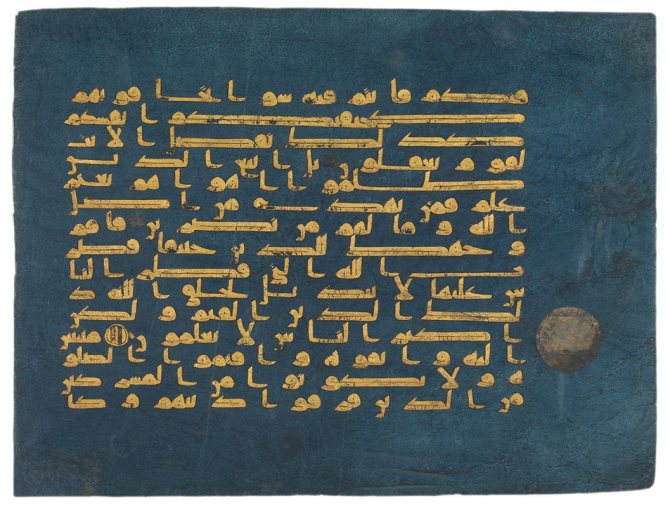
"Blue Koran." Presumably from Kairouan. Tunis, second half of the ninth to mid-tenth century. Sample of Abbasid kufi. Parchment colored blue, gold ink used. According to tradition, the Blue Koran was commissioned by the Abbasid caliph Abd al-Ma'mun for the tomb of his father Harun ar-Rashid in Mashhad, Iran. For unknown reasons, it never made it from North Africa to Iran.The Metropolitan Museum of Art
Over time, calligraphic quotations from the Koran became self-sufficient compositions combining aesthetic beauty and divine wisdom. Individual ayats of the Quran or whole surahs were inscribed inside and outside architectural structures, on mosque walls, in books and medallions, on tombstones, weapons, and tableware, becoming prayers to protect believers and remind them of the greatness of God. We tell you about the ten most common such inscriptions.
"In the name of Allah, the gracious, the merciful."
1 / 3
Basmal. Contemporary calligrapher Mehmed Özçay. Turkey, 1999Fundación Cultural Oriente.
2 / 3
Basmala in the form of a bird. Contemporary Persian calligraphyFundación Cultural Oriente.
3 / 3
Basmala. Contemporary calligrapher Mehmed Ozcay. TurkeyFundación Cultural Oriente
The most popular formula in Islamic culture has become basmala, the phrase "Bismillahi r-rahmani r rahim" ("In the name of Allah, the merciful, the compassionate"), which opens the Koran and begins the vast majority of its surahs. A Muslim begins every good deed by reciting this formula; all books, prayers and official speeches of Muslims begin with it.
"I believe: there is no deity but God, and Muhammad is his prophet."
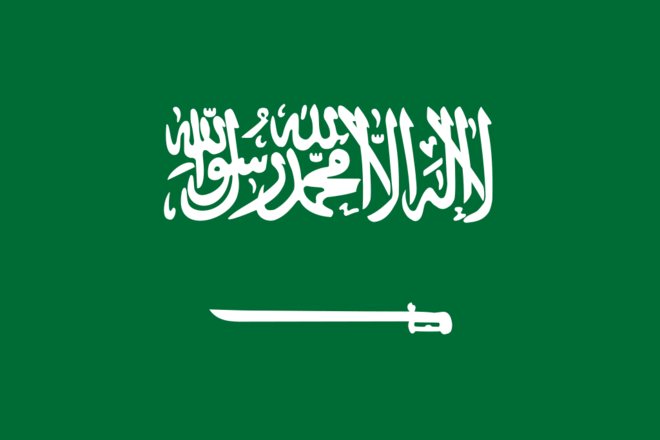

1 / 2
Shahada: "I believe there is no deity but God, and Muhammad is his prophet. Modern Calligraphy
2 / 2
The flag of Saudi ArabiaWikimedia Commons
Another common formula used by Islamic calligraphers is the shahada, or monotheistic formula. The most famous example of its use is the flag of the Kingdom of Saudi Arabia.
"Only the purified touch it."
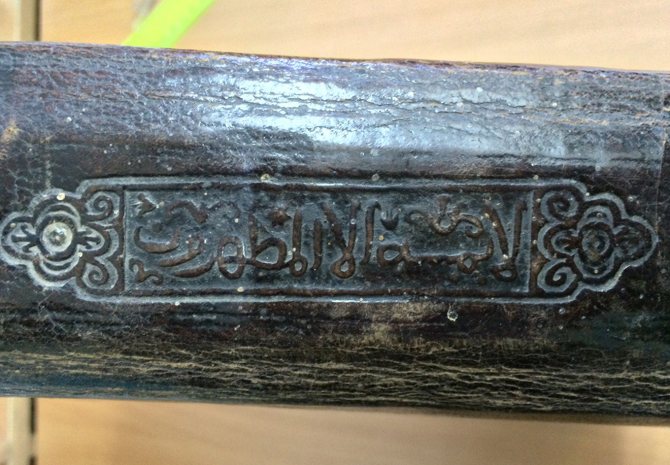

Inscription on the spine of a Qur'an binding. Palestine, 17th centuryIvanovo State Historical and Local Lore Museum. D. G. Burylin
Some surahs of the Qur'an have become a favorite for any one type of object or craft. In particular, there is a tradition of placing Ayat 79 of Surah 56 ("Falling") "Only the purified touch it" (نا يَمَسُّهُ إِلَّا الْمُطَهَّرُون ) on the bindings of the Koran, which reminds us to observe ritual purity before praying and reciting the holy book.
Arab tattoos and celebrities
Actresses Selena Gomez and Angelina Jolie are also fans of tattoo inscriptions in Arabic. Selena Gomez did the inscription - a reminder - "Love yourself. No matter what anyone says about you, love yourself!
And the word "definition" took its place on Angelina Jolie's right arm, with which she overlapped an abstract drawing made during her marriage to her ex-spouse Billy Bob Thornton.
Most importantly, don't rush your choice. It's better to spend an extra month defining and choosing a tattoo than to regret your hasty choice for the rest of your life. And once chosen, then 10-15 days after you have done the tattoo, take care of your skin and make an appointment for correction in time. Then your tattoo will look like new for a long time.
Source
"Truly, We have given you a clear victory."
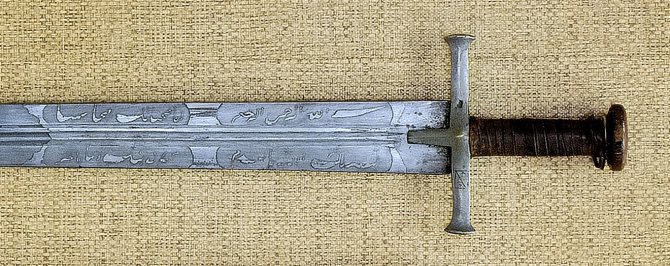

Cascara sword. Sudan, 19th century.© Ilya Zaitsev
The first ayat of Surah 48 "Fatah" ("Victory") - "Verily, We have given you clear victory" (إِنَّا فَتَحْنَا لَكَ فَتْحًا مُّبِينًا) - was often placed on blades by master armourers. These words were sent down to the prophet on the very specific occasion of the conclusion of a peace treaty in 628 at Hudaybiyya near Mecca between Muslims and pagans, when both sides agreed not to fight against each other for ten years, and the prophet moved the pilgrimage to the year following that. This was the most important event in Muslim history, when in March 628 Muhammad attempted to make a pilgrimage to the Kaaba, first the main shrine of the Arabian population in general, and then of Islam. At the first attempt, the prophet and his community were not allowed into Mecca, but a truce and agreement was made that Muslims could come to Mecca a year later. Placed on weapons, these words symbolized the victory of Islam.
Inscriptions in Tattoos
Did you know that the art of tattooing is over 60,000 years old? To decorate themselves with bizarre patterns, images, inscriptions began in the Paleolithic era. The art of body painting was especially popular in what is now Japan, China, Australia, and Oceania.
In medieval Europe, on the contrary - anyone who wore drawings on the body was considered a spawn of the devil. In our time tattooing began to play a role of a peculiar adornment, we can say that this art began to carry out a decorative function. Especially popular were female and male tattoo inscriptions.
About them we will talk in our article.
Traditions of the East
The art of tattooing became the most widespread in the countries of the ancient East. For example, in Japan it had become popular to decorate the body by various images approximately in X century A.D., and came this fashion in the Land of the Rising Sun from the neighboring Thailand and China.
In those days it was believed that the more patterns on the body of a woman, the stronger and more resilient she is, which means that she will be a good wife and mother. Later the tattoo became a symbol of wealth and power. It was believed that the more exquisite and luxurious the drawings on the body of a nobleman, the higher his position in society.
Samurai and geisha also decorated themselves with various images. By the way, it is believed that Japan is the birthplace of the volumetric tattoo.
Africa as the center of tattoo culture
In our time it has become popular to stuff various drawings for beauty, and in the old days, any symbol tattooed on the body, carried a special meaning.
For example, in Africa, where it was hot all year round and therefore it was not necessary to wear clothes, every self-respecting local resident was covered with tattoos. Often it was possible to judge by them what tribe this or that person belonged to, what was his status in society.
And, if Europeans drew such information from the clothes, the African aborigines could judge a person only by the drawings with which he covered himself during his life.
And if nowadays in Europe and especially in the CIS, where Christian traditions gave tattoo culture almost a "demonic" meaning, tattooed people are looked at obliquely, in Africa on the contrary - such people are respected and honored.
The legacy of the North American Indians
The ancient Indians viewed tattoos as having approximately the same meaning as the Africans.
Thus, by the features of the patterns on the body of this or that person could be determined how many victories over the enemy he had, what status he had in society, how good a warrior he was, etc.
Tattoo in Europe
In pre-Christian Europe, tattoos also were not something unusual, they covered their bodies the Vikings, British Celts and representatives of many other peoples. However, with the advent of Christianity, the meaning of the drawings was distorted, and the very fact of their presence did not bode well for man.
The ruthless Spanish conquistadors brutalized the painted Indians, considering them ungodly and "satanic brats. Anyone who drew on the body became considered a "godless" and pagan. Later, tattoo culture spread in the ranks of sailors, workers, and military personnel.
Decorating themselves with various drawings, Europeans wanted to protect themselves from misfortune, to attract the benevolence of the elements (sailors), to call for good luck.
Inscriptions as a separate type of art tattoo
As it is known, nowadays the tattooed drawings ceased to bear in itself such deep meaning as for the peoples of antiquity. Moreover, some people do not put any meaning in them at all. Now tattoo became more of a decorative attribute of individual style.
Guys and girls decorate themselves with body art in order to make themselves more attractive and sexy, and some attract attention to themselves in this way.
However, if you still want to give your tattoo a special meaning (to motivate yourself to achieve a special goal, to give yourself strength, to remember some important event in your life), it is worth resorting to inscriptions.
What does a tattoo inscription look like? Often, it is aphorism (winged expression), said by a celebrity or folk wisdom, executed in a particular style. The letters can be a variety of bizarre forms. For example:
Russian is rarely used for tattoos. Most often it is:
Let's take a closer look at women's and men's tattoo inscriptions.
The meaning of inscriptions for men and women
We choose the font.
It is impossible to say unequivocally what font style for the inscription of your tattoo will suit you. Such details you should discuss individually with your craftsman. We will give brief information about fonts to make your lettering unique:
Popular lettering
Not surprisingly, the most popular phrases are in Latin and English, because many of those who do not even know these languages understand the meaning of winged expressions.
On the chest
On the arm
On the wrist
On the collarbone
On the leg
On back
Top 10 Miniature Inscriptions
Top 10 Latin inscriptions
In Arabic
Italian
In Spanish
On German
On English
"And gave them a pure drink."


A fountain in the khan's palace in Bakhchisaray. 1764© Ilya Zaitsev
On the buildings of the baths and on the fountains of the springs the masters often placed ayats related to water, which in the Koran is mentioned almost always in pictures of paradise. For example, sura 76, ayat 21: "And he gave them [the young men of Paradise] a pure drink" (وَسَقَاهُمْ رَبُّهُمْ شَرَابًا طَهُورًا); or sura 76, ayat 18: "[The righteous will drink water] from the spring called Selsebil" (عَيْنًا فِيهَا تُسَمَّى سَلْسَبِيلًا) - meaning that they will drink it in paradise. These very lines are placed on several fountains in the Bakhchisarai Palace, including the famous Fountain of Tears.
Category
Tattoos Arabic inscriptions with translation deserve special attention in the art of placing patterns on the body. They have quite an interesting history. This is important if you want to show your tattoo a connection to Eastern culture or inherit its traditions.
However, you have to be aware of one thing. The fact is that the Arab countries are traditionally practicing Islam. And as far as tattoos are concerned, everything is very strict: the religion prohibits them. But still formed some traditions of temporary tattoos, which today we can transfer to the permanent inscription on the body.
If you decide to get tattoo in arabic with translationIf you've decided to get a tattoo in Arabic translations, it has to have some special characteristics:
- First, find a tattoo master who represents the beautiful half of humanity. After all, in the art of applying temporary tattoos, the performer must be a woman.
- Ask the master to perform your chosen Tattoo Arabic inscriptions with translation In blue color.
- It is desirable that the inscription you have chosen has a magical, protective and prophetic character. It is caused by the fact that to put a usual decorative tattoos is not accepted neither in poor, nor in the average, nor in the higher strata of society.
- Exclude the desire to apply the image of a living person and any other creature with a signature.
But if you don't treat religion and Arabic traditions with such, perhaps, excessive trepidation, and you simply like the style of writing in script, you will save yourself a lot of trouble. After all, your Arabic tattoo inscriptions with translation Will see not only the husband, and, therefore, it is worth emphasizing their aesthetic appearance. Especially if you remember that for us, tattoos in blue or green colors are mostly prison or military. In black, the inscription looks more enchanting on a woman's body and more spectacular on a man's body.
You should also take into account that Arabic ligature tattoo with translation Is very difficult to perform. Most tattoo artists have no knowledge of the language, and therefore can make a colossal mistake. In any tattoo lettering, this is unacceptable.
When you choose a sketch, don't forget that Arabic is written from right to left. Be sure to make sure the word or phrase you choose is spelled correctly. Better yet, contact a native speaker and ask him to translate the desired text and write it correctly.
Today thanks to social networks and various Internet forums it is not difficult to find one. Of course, a tattoo-master can supplement an inscription with various floral or geometric ornaments. The main thing is that this does not change the meaning of the tattoo.
Aesthetically, the linked letters give the tattoo an exceptional charm. But the meaning is also important. More popular choices include:
- جريء ("he knows no fear");
- حب ("love");
- اجعل الله اولويتك ("the Lord is above all things");
- جمال ("beauty");
- قلبي على قلبك ("life is beautiful");
- سعادة ("happiness");
- إبقَ قوياٌ ("be strong");
- شجاعة ("courage").
"The soul does not know in what land it will die. Truly Allah is omniscient, omniscient."


Tombstone. End of the 16th century.© Ilya Zaitsev
For funerary themes the Qur'an also gave unusually much. On tombstones all over the world Muslims placed as an admonition and reminder of the inevitable end of the flesh, such as these ayats: "Allah the Glorious and the Most High has said: "The soul does not know in which land it will die. Verily Allah is All-Knowing, All-Knowing." (Qur'an 31:34, ending). Or, "Allah the Most Blessed and Most High said, 'Every soul shall taste death'" (Sura 29, ayat 57). We often see these ayats in the medieval epitaphs of the Muslims of Volga Bulgaria, the Golden Horde, and the Tatar khanates.
"His throne embraces the heavens and the earth, and does not weigh down His guard over them."
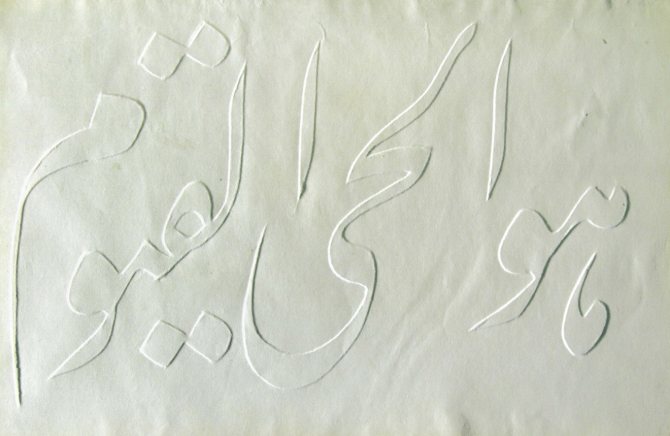

Paraphrase from the Throne Ayat. Technique of squeezing the nail on the paperFundación Cultural Oriente
One of the most popular calligraphic ayats is the so-called Throne ayat: surah 2, al-Baqara (The Cow), ayat 255 Al-Qursi. It is called the Throne because it refers to the throne of Allah: "Allah - there is no deity but Him, the living, the existent; neither slumber nor sleep possesses Him; He owns that which is in the heavens and the earth. Who shall intercede before Him except by His permission? He knows what was before them and what will be after them, and they comprehend nothing of His knowledge except what He wills. His throne encompasses the heavens and the earth, and He does not weigh down their guards; verily, He is the Most High, the Great.
زندگى من|My Life
1. There is one world in which my soul feels like home... It is the world of your thoughtful eyes.
Hunak 'alam haisu tash'ur ruhi nafsaha kaannaha fi baitiha... Wa haza l-'alam hua 'alam 'uyunak al-mutaammila fi-t-tafkir.
هُنَاكْ عَالَمْ حَيْثُ تَشْعُرْ رُوحِي نَفْسَهَا كَأَنهَّا فِي بَيْتِهَا وَ هَذَا الْعَالَمْ هُوَ عَالَمْ عُيُونَكْ الْمُتَأَمِّلَة فِي التَّفْكِير
2. Set your face to the sun and it will kiss you. Gently and tenderly. Like me.
ضِعْ وَجْهَكْ تَحْتَ أَشِعَّةِ الشَّمْس فَتُقَبِّّلُكْ بِكُلِّ لُطْف كَمَا أُقَبِّّلُكْ أَنَا
Di'a uajhak taht ashi'ati sh- shams fa tuqabbiluk bi kulli lutf. kama uqabbiluk ana.
3. I'll love you when a blind painter draws the sound of a falling rose petal, on the crystal floor of a nonexistent castle.
سَأَقْلَعْ عَنِ الْحُبّ لَكْ بَعْدَمَا يَرْسَمُ الرَّسَّامُ الأَعْمَي صَوْتَ وَرَقَةِ الْوَرْدَة الْمَسْقُوطَة عَليَ أَرْضٍ بَلُّوُرِيّ لِلْقَصْر أَلْغَيْر مَوْجُودْ فِي الْوَاقِعْ
Saakla' ani-l-hubb lak ba'ad ma yarsamu-r-rassamu-l-a'ma sauta
uarakati l-uarda al-maskuta 'ala ardin balluri li l-qasr al-gayr maujud fi-l-uaki'
4. God created the two most beautiful creatures in the world. It is the Earth and YOU. You are the Beauty.
لَقَدْ خَلَقَ الْخَالِقْ أَجْمَلَ الْخَلِيقَتَانْ فِي الْعَالَمْ وَ هُمَا الأَرْض وَ أَنْ
5. I asked God for water, he gave me the sea. I asked God for grass, he gave me a field. I asked God for an angel, he gave me you.
لَقََدْ طَلَبْتُ مِنَ الْخَالِقْ مَاءً فَوَهَبَنِي بَحْراً. وَ طَلَبْتُ مِنَ الْخَالَقْ عُشْباً فَوَهَبَنِي حَقْلاً. وَ طَلَبْتُ مِنَ الْخَالَقْ مَلَكاً فَوَهَبَنِي أَنْتَ
Lakad talabtu mina-l-halik ma'an fa uahabani bahran. Ua talabtu mina-l-halik 'ushban fa uahabani haqlan. Oua talabtu mina-l-halik malakan fa uahabani anta.
6. I want to offer you a journey: The direction is the stars, the driver is love,
transport - heart, passengers - you and me, tickets are irrevocable. How's that?
أُرِيدْ أَنْ أَقْتَرِحْ لَكْ الْقِيَامْ بِرِحْلَة: الإِتِّجَاهْ نَحْوَ النُّجُومْ وَ السَّائِقْ هُوَ الْحُبّ وَ وَ وَسِيلَة النَّقْل هِيَ
الْقَلْب وَ الرُّكَّابْ أَنْتَ وَ أَنَا وَ التَّذَاكِرْ دُونَ الرُّجُوعْ مَا رََأْيُكْ؟
Urid an actarih lak al-kiyam bi rihla: al-ittijah nahua an-nujum, wa-sa'iq hua al-hubb, wa uasilat an-nakl hiyah al-kalb, wa-r-rukkab anta wa ana, wa-t-tazakir dun ar-ruju'. Ma rayuk?
7. Europe sleeps, Australia falls asleep. It is evening in America, and the most beautiful eyes in this world are reading my letter.
Urubba tanam wa Ustraliyya tastagrik fi-nnaum wa tumsa ad-dunya fi Amrika. Ua ajmalu l-'uyun phi l-'alam tara risalati
أُرُوباَّ تَنَامْ وَ أُسْترَالِيَا تَسْتَغْرِقْ فِي النَّوْم وَ تُمْسَي الدُّنْيَا فِي أَمْرِيكاَ. وَ أَجْمَلُ الْع
8. I would like to be born a tear in your eyes, to live on your face and die on your lips
Audd an atahuallad bi thinki'a fi 'uyunak liqai a'ish 'ala uajhak wa amut 'ala shifahak
أَوُدّ أَنْ أَتَوَلَّدْ بِدُمَيْعَة فِي عُيُونَكْ لِكَيْ أَعِيشْ عَليَ وَجْهَكْ وَ أَمُوتْ عَليَ شِفَاهَك
9. Every night, thoughts of you, like starbursts, fall in clusters and burn in the darkness, leaving only a scalding trail of sadness and sorrow.
Ufakkir fiq qulla layla wa taskut afqari ka shuhub wa hiya taskut bi 'anakid wa takhtarik fi zalam of tabka asaran mulawahan mina-l-huzn wa l-gussa
أُفَكِّرْ فِيكْ كُلَّ لَيْلَة وَ تَسْقُطْ أَفْكَارِي كَالشُّهُبْ وَ تَسْقُطْ بِعَنَاقِيدْ وَ تَحْتَرِقْ فِي الظَّلاَمْ إِذْ تَبْقَي أَثَراً مُلَوَّحاً مِنَ الْحُزْن وَ الْغُصَّة
10. I want all the clocks in the world to stop and the world to be for the two of us
Urid an tatawakkaf jami'u-sa'at fi-l-'alam wa yabka al-'alam lana al-isnain
أُرِيدْ أَنْ تَتَوَقَّفْ جَمِيعُ السَّاعَاتْ فِي الْعَالَمْ وَ يَْقَي الْعَالَمْ لَناَ الإثْنَي
يا ملكي! إن صوتك الحنونيفتنني أكثر فأكثر! يا نور روحي! إن مدهشة عيونك تدمّرني و تعجبني و تجنّني. ولا أستطيع ان أفكّر بهذه الصورة إلا عنك فقط. يا قطيتي، يسحرني قلبك الحنون إذ يساعدني ان أعيش في هذه الدنيا. إن رسائلك الحنونة تدفئ قلبي المسكين. فليعش حبنا أبد الابدين!
My angel, your gentle voice attracts me more and more! The light of my soul! The wonder of your eyes amazes, delights and drives me crazy. And so I can only think of you. My cat, your tender heart enchants me, helping me to survive in this hectic world. Your tender letters warm my poor heart. May our love live forever!
as it sounds in Arabic:
Ya ma'liqi! Inna sa'u'tak al-khanun yafti'nuni a'xar fa'a'xar! Ya nuru ru'hi! And the mu'dhishat of 'uyuunak tudammi'runi in tu'jibuni in tu'janni'uni. La astiti'a an ufa'kkir bi ha'zihi-sura ila 'a'nka fa'kat. Ya kuta'ti, yasri'huni ka'lbak al-khanun of yusa'iduni an'isha fi ha'zihi-d-du'niyah. Inna risa´latak al-khanu´na ta´dfi ka´lbi-l-miski´n. Fa
liya'ish hu'buna abd al-abadayn!
هُنَاكْ عَالَمْ حَيْثُ تَشْعُرْ رُوحِي نَفْسَهَا كَأَنهَّا فِي بَيْتِهَا. وَ هَذَا الْعَالَمْ هُوَ عَالَمْ عُيُونَكْ الْمُتَأَمِّلَة فِي التَّفْكِير
There is one world in which my soul feels like home... It is the world of your thoughtful eyes.
What it sounds like in Arabic:
Hunak 'alam haisu tash'ur ruhi nafsaha kaannaha fi baitiha... Wa haza l-'alam hua 'alam 'uyunak al-mutaammila fi-t-tafkir.
Source
"Allah is one, Allah, eternal, neither begotten nor born, nor was any one equal to Him!"


Surah 112 on a modern embroidery diagram
Another fragment of the Qur'an, surah 112, which has several titles, is common as an independent text: "Purification [of Faith]," "Unity," or "Eternal" (after Allah's epithet): "In the name of Allah the merciful, the merciful! Say, "He - Allah - is one, Allah, the Eternal, neither begotten nor begotten, nor was any equal to Him!" The first surviving Russian translation of a fragment of the Qur'anic text of a surah, made directly from the original and precisely dated 1572, is precisely the surah "Purification [of Faith]."
"Said the prophet, peace be upon him..."


Credible hadith "Whoever does not thank people does not thank Allah either." 2010© kalem-guzeli.org
In addition to quotations from the Koran, calligraphers were inspired by hadiths - stories of the Prophet Muhammad's deeds and words (actually the direct speech of Allah sent down through the Prophet) - which have survived through the written recording of the oral tradition. Hadiths were compiled in special collections, including thematic ones. Each hadith begins with the words "Said the Prophet, peace be upon him...". Then comes the text of the tradition itself, such as "This life is an hour, use it to serve [God]," or "Whoever does not thank people does not thank Allah.
Quotes in Arabic with translation
ش اليوم وإنس الغد *** Live today, forget about tomorrow.
ليس العار في أن نسقط . و لكن العار أن تستطيع النهوض *** There is no shame in falling. shame in falling and not being able to get up.
العَالِمُ بِلَا عَمَلٍ سَحَابٌ بِلَامَطَرٍ *** A scholar without practice is like a cloud without rain.
ﺍﻟﻌﻴﻮﻥ ﺍﻟﻌﺮﺑﻴﺔ ﻟﻬﺎ ﺳﻤﺔ ﺧﺎﺻﻪ ﺑﻬﺎ - ﺗﺒﺪﺍ ﺑﺎﻟﺘﺢ *** Arab eyes have an interesting feature - to start talking when their lips have not yet moved
إِذَا صَاحَتِ الدَّجاجَةُ صِياحَ الدِّيكِ فَلْتُذْبَحْ *** When a chicken cocks like a rooster, it gets cut!
هُنَاكْ عَالَمْ حَيْثُ تَشْعُرْ رُوحِي نَفْسَهَا كَأَنهَّاَ فِي بَيْتِهَا... وَ هَذَا الْعَالَمْ هُوَ عَالَمْ عُيُونَكْ الْمُتَأَمِّلَة فِي التَّفْكِير *** There is one world where my soul feels like home... It is the world of your thoughtful eyes...
الصداقة كصحة الإنسان لا تشعر بقیمتھا إلا عندما تفقدھا *** Friendship is like health: you do not feel it until you lose it.
كل إنسانيصبح شاعراً إذا لام قلبه الحب *** With the touch of love everyone becomes a poet.
لا تَكُنْ قاسِياً فَتُكْسَر... وَلا لَيِّناً فَتُعْصَر *** If you are hard, they break, if you are soft, they compress
سامحني و حبني دائماً *** Forgive and always love me.
ظَنُّ الْعَاقِلِ خَيْرٌ مِنْ يَقِينِ الْجِاهِلِ *** The assumption of an intelligent man is better than the conviction of an ignoramus.
إذا ضَرَبْتَ فأَوْجِعَ وَإِذَا زَجَرْتَ فَأسْمِعْ *** If you hit, hurt, if you warn, make yourself heard.
سَأَقْلَعْ عَنِ الْحُبّ لَكْ بَعْدَ مَا يَرْسَمُ الرَّسَّامُ الأَعْمَي صَوْتَ وَرَقَةِ الْوَرْدَة الْمَسْقُوطَة عَليَ أَرْضٍ بَلُّوُرِيّ لِلْقَصْر أَلْغَيْر مَوْجُودْ فِي الْوَاقِعْ *** I will unfriend you then, when a blind painter draws the sound of a falling rose petal, on the crystal floor of a nonexistent castle.
الأفكار العليا لابد لها من لغة عليا *** High thoughts should be expressed in high language.
الصديق الحقيقي ھو الذي يمشي إليك عندما يبتعد عنك كل العالم *** A true friend is one who comes to you when everyone is distant.
لا تُعْطِني سَمَكَةً... كَيْفَ أَصْطادُها *** Give a man a fish and you feed him for a day...Teach him to fish and you feed him for life
العبقرية جزء من الوحي والإلهام, وتسعة وتعون جزءا من الكد والجهد العظيم *** Genius is one percent inspiration and ninety nine percent sweat and great effort.
الجمال ليس عصفور في قفص *** Love is not a bird that can be kept in a cage.
شَرُّ الْمُلُوكِ مَنْ خَافَهُ الْبَرِئُ. *** Bad is the ruler whom an honest man fears.
إِنَّما القَرْمُ مِنَ الأفيِلِ *** And the tribal camel was surely once a little one.
